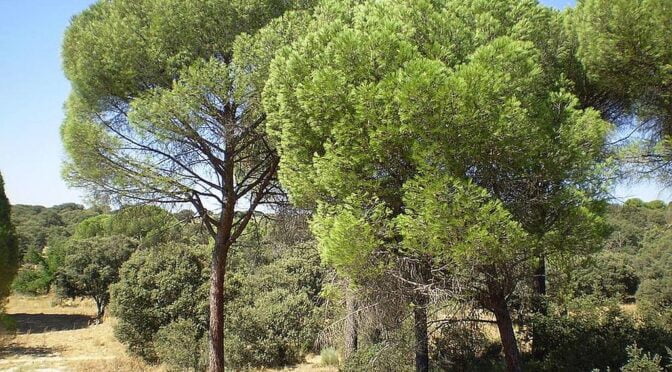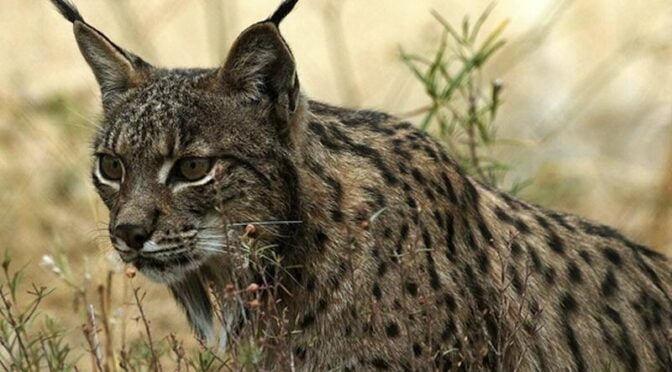- Region: Navarra
- Declared a Natural Park:1999
- Declared a Biosphere reserve: 2000 (includes the Natural Reserve ‘Rincón del Bú’ and the Reserva Natural ‘Caídas de la Negra’
- Park surface area: 41,845 hectares
- Towns and villages: Valtierra, Arguedas, Carcastillo, Santacara, Mélida, Rada, Caparroso, Villafranca, Cadreita, Tudela, Cabanillas, Fustiñana and Buñuel
Points of interest
The Bardenas Reales Natural Park and Biosphere Reserve is a semi-desert region, or badlands in the southeast Navarra. The soils are made up of clay, chalk and sandstone and have been eroded by water and wind creating surprising shapes, canyons, plateaus, tabular structures and isolated hills, called cabezos. Vegetation is scarce in many places and the small streams that cross the area are dry for most of the year.
The climate is characterized by extremes, with very cold winters giving way with almost no transition into spring and torrid summers. Rainfall, scant and irregular is frequently torrential. The action of strong dry winds, particularly from the north-east (cierzos), accentuates the aridity of the area.
Three different habitat areas are present:
- The great plateau, known as El Plano in the north is an almost flat, elevated alluvial plateau, whose soil originates from the Aragón river.
- La Blanca in the central area is a great depression where softer sedimentary rocks leaving clay unprotected, gives rise to spectacular erosive formations (badlands).
- La Negra is an area located to the south is formed by plateaus of different altitudes and cut by rivers flowing at the bottom of the cliffs. (This part of the Bardenas has a lot more flora present.)
Since 1951, the Spanish Air Force has had a 2,222-hectare firing range in the Bardenas. In 2016 , the Parliament of Navarre called for the removal of the shooting range but practising still takes place throuout the year.
Find a hotel close to the Bardenas Reales Natural Park and Biosphere Reserve
[booking_product_helper shortname=”bardenas reales natural park and biosphere reserve (navarra)”]
Flora
This area is surprisingly rich in flora in terms of abundance and biogeographical significance. Common species are thyme (Thymus vulgaris ), Spanish broom (Genista scorpius) and Cistus (Cistus albidus).
Look out for Helianthemum origanifolium subsp. rotundifolium, Fumana ericoides, Fumana thymifolia, Atractylis humilis, Stipa parviflora, Centaurea linifolia and Polygala rupestris.
Brachypodium retusum grassland appears in open clearings along with interesting species such as Narcissus dubius, Narcissus triandrus subsp. pallidulus and Sideritis spinulosa.
The only forests area that exist in Bardenas are the pine groves located on the slopes of La Negra. They are open forests dominated by Aleppo pine (Pinus halepensis ) and are accompanied by species such as black juniper, kermes oak and mastic tree

Fauna
In terms of fauna, an abundance of birds of prey, such as Griffon Vulture, Egyptian Vulture, Golden Eagle and Peregrine falcon are present in good numbers along with a diversity of grassland birds, such as Great Bustard, Little Bustard, Eurasian Stone Curlew, Black-bellied Sandgrouse and Dupont Lark.
Mammals present are rabbit, hare, fox, weasel, badger, wild cat, roe deer and wild boar.
Look out for the The European pond turtle (Emys orbicularis) in ponds and lagoons.
Video of the Bardenas Reales Natural Park and Biosphere Reserve
I really like the music that goes with this video. 🙂
Information/Visitors Centers
Centro de Información Bardenas Reales Natural Park and Biosphere Reserve
Access is from the NA-8712 km. 0.8 (Tudela-Arguedas / Arguedas-Tudela)
Open from 9.00am-1.00pm and then later also from 4.00pm. (It is closed during lunchtime).
Most people visiting this area start at the visitor centre that can supply you with maps and more information about the area. Apart from biking and hiking routes many people take the signposted 34km dirt track that is passable with a normal car (You don’t need a 4×4 so long as you don’t stray off the path! 🙂 ). Be prepared for your car and you to get very dusty as you pass through areas where Star Wars, James Bond and Game of Thrones, amongst others have been filmed. Its best to arrive fairly early in order to avoid the heat of the day as there is little if any shade here.
There are many places to pull in and a wealth of photographic opportunities throughout the drive.
Also, remember that here is nowhere selling food or drink nearby so you will need to bring your own if you plan on staying a while.
IMPORTANT: Access is limited to the areas of La ralla, Rallón, La Gorra and la Balsa de Zapata during February, March, April, May, June, July and August in order to protect nesting birds and other wildlife. Just check with the tourist office if you are intending on exploring these areas.
Zona Turística El Ferial
Next to the El Ferial Reservoir. (Entrance from the N-121, km. 60,800 (Tudela-Caparroso; Caparroso-Tudela).
Here you will find a recreation area with an information point and a restaurant. there is also a bird watching observatory on the shore of the lake and some interesting footpaths.
See the official websiite for the Bardenas Reales Natural Park and Biosphere Reserve here: https://bardenasreales.es/
Iberia Nature Forum
Struggling with identifying those bugs and beasties? Why not check out the Iberia nature Forum!
Discover the Iberia Nature Forum – Environment, geography, nature, landscape, climate, culture, history, rural tourism and travel.




